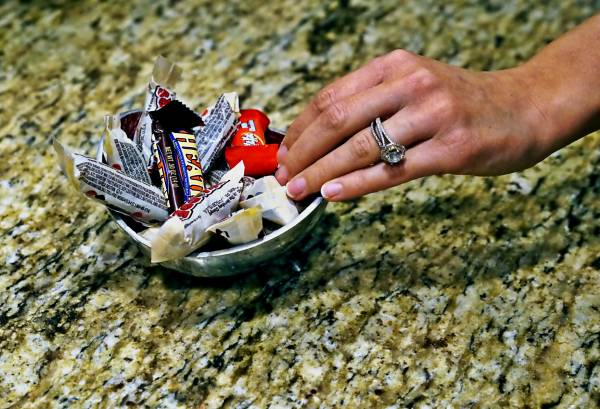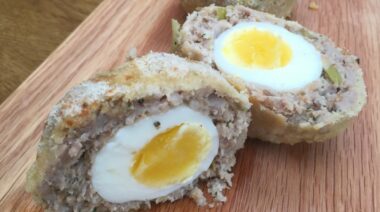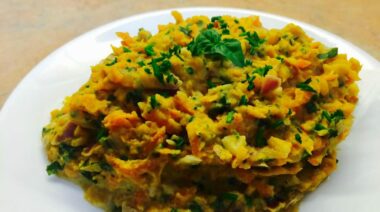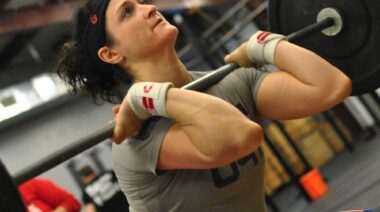It’s always a battle not to overindulge during the holidays. Willpower is in limited supply as we are surrounded by many food choices within our immediate environment. Rather than relying on willpower, we can change the environment so that we don’t overindulge. Below are some tips on changing your eating environment that you can use to immediate effect during the holiday season.
Use Smaller Plates
A recent study by Wansink and colleagues investigated how plate size affects how much we eat.6 The researchers investigated how much people serve themselves at a Chinese buffet-style restaurant. Participants in the study did not know they were being observed and could choose either a small or large plate to serve themselves. People who chose a large plate put about 52% more food on their plate and ate about 45% more.
Wansink’s group has done many other studies concluding that the larger the serving container the more we will eat. This applies to popcorn containers, soda glasses, and soup bowls.2,4,5
The urge to add more to the plate on the right is almost palpable.
We rely on the visual of the container to tell us how much to serve ourselves. We feel that we should fill the plate to capacity. The picture above illustrates how the same size fruit fills out a small and large plate.
Holiday Tip: Use a salad plate or a smaller plate when serving yourself. The visual cue will nudge you to put less on your plate and subsequently eat less.
Make Unhealthy Food Less Accessible
This group of researchers also found that moving a candy dish further away from people led to less consumption.3 Moving the dish just a few feet away, putting a lid on it, and moving it across the room led to even less eating. The more barriers you put between you and unhealthy food choices, the easier it will be to avoid the temptation.
Holiday Tip: Keep your healthy food choices nearby and the unhealthy ones far away and out of sight.

Have one of these on your desk at work? Move it somewhere else. Like a coworker’s desk.
Leave the Evidence
The same group looked at chicken wing consumption. For some participants, the remaining bones were left on the table. For the other group, the bones were quickly removed. The group without the evidence on the table ate much more chicken. This study is another example of how we use visual cues to tell us how much to eat. If we have evidence of how much we ate, then we eat less.
One of the most famous studies by Wansink’s group utilized a self-refilling bowl of soup.4 Participants unknowingly had their soup refilled from the bottom as they ate. As the level of the soup did not go down, they tended to eat more than others eating from a traditional bowl. The visual cue of how much they ate helped them know when they should stop eating.
Holiday Tip: For foods that can leave evidence (e.g., wrappers, bones, peels), leave the evidence in plain sight. It will help you to eat less as it reminds you of what you have already eaten.
Be the Slowest at the Table
Signals that we are full or satiated take time. Our body produces hormones telling us about our hunger and satiety. We also produce neurotransmitters that tell us to keep eating rewarding food. If we slow down how fast we eat, we can still enjoy the reward signals, but allow the satiety hormones to catch up to our eating.
Holiday Tip: Find the person at the table who is eating the slowest and try to eat even slower. If you are a competitive individual, you can make an internal competition (CrossFitters, imagine a WOD where the slowest time wins).
Damage Limitation
Being mindful with eating is not going to help someone lose weight drastically. However, it might reduce the gradual weight increase that comes over time.7 By eating slightly less unhealthy food, we can reduce harm that accumulates over time. This holiday season, try eating with a smaller plate, keeping unhealthy food out of sight, but the evidence in sight, and eat as slowly as possible.
More Hope for Healthy Holidays:
- How to Train, Travel, and Relax During the Holidays
- 7 Tips for Busting Sugar Cravings During the Holidays
- How to Stay Healthy and Lean During the Holidays
- New on Pulse Beat Fit Today
References:
1. Wansink, B., Mindless Eating: Why We Eat More than We Think (Bantam:2007).
2. Wansink, B., and Junyong Kim. 2005. “Bad Popcorn in Big Buckets: Portion Size Can Influence Intake as Much as Taste.” Journal of Nutrition Education and Behavior37 (5): 242–45.
3. Wansink, B., Painter, J. E., & Lee, Y.-K. (2006). “The office candy dish: proximity’s influence on estimated and actual consumption.” International Journal of Obesity, 30(5), 871–875.
4. Wansink, B., Painter, J. E. and North, J. 2005. “Bottomless Bowls: Why Visual Cues of Portion Size May Influence Intake.” Obesity 13 (1): 93–100. doi:10.1038/oby.2005.12.
5. Wansink, B., Payne, C. R., and Chandon, P. 2007. “Internal and External Cues of Meal Cessation: The French Paradox Redux?” Obesity 15 (12): 2920–24.
6. Wansink, B., and van Ittersum, K. 2013. “Portion Size Me: Plate-Size Induced Consumption Norms and Win-Win Solutions for Reducing Food Intake and Waste.”Journal of Experimental Psychology: Applied 19 (4): 320–32. doi:10.1037/a0035053.
7.Dahn, Jason R., Apterbach, Greta. et al. 2011. “Weight Management for Veterans: Examining Change in Weight before and after MOVE!” Obesity (Silver Spring, Md.) 19 (5): 977–81. doi:10.1038/oby.2010.273.
Photos courtesy of Craig Marker.






